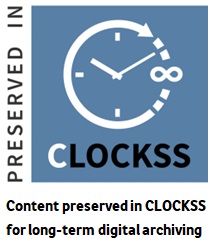Cinematic Language: Thresholds, Characters, and Passions in Moroccan Cinema ; A Study of the Film “Deserts” by Faouzi Bensaïdi
DOI:
https://doi.org/10.63939/ajts.a4cjgg17Keywords:
Cinema, Language, Characters, Filmic Trajectories, Temporality & SpatialityAbstract
The feature film Déserts, directed by Moroccan filmmaker Faouzi Bensaïdi, displays powerful aesthetic qualities, both in terms of its formal structure and the thematic depth it explores. The film engages with what the director himself refers to as "conflicts between values, traditions, and humanity in the face of the brutality of the modern world." It exemplifies an avant-garde cinematic vision that elevates cinema into a space of artistic refinement while simultaneously conveying profound humanistic messages. These messages invite the viewer to perceive the world through a more nuanced and empathetic lens.
Accordingly, the filmic trajectory is reinforced by a mise-en-scène that respects the integrity of artistic creation, while also committing itself to the critical examination of social dynamics. These are effectively depicted through a carefully constructed cinematic narrative. In this regard, the film’s portrayal of both positive and negative moments reflects a broader system of social values — one that attributes meaning to objects and experiences based on collective consensus. Such a system emerges from events that either frustrate or fulfill the individual or the collective, whether on a psychological, economic, or social level. This mechanism is rendered in the film with notable clarity and precision.
Downloads
References
Aumont, J., Bergala, A., Marie, M., & Vernet, M. (1983). L’esthétique du film. Nathan
Avril, N. (2006). Dictionnaire de la passion amoureuse. Éditions du Plon
Bazin, A. (1958–1962). Qu’est-ce que le cinéma ? Éditions du Cerf
Chevalier, J., & Gheerbrant, A. (1999). Dictionnaire des symboles. Éditions Robert Laffont / Éditions Jupiter
Ducrot, O., & Todorov, T. (1972). Dictionnaire encyclopédique des sciences du langage. Éditions du Seuil
Eizykman, C. (1976). La jouissance-cinéma. Union générale d’éditions
Gaudreault, A., & Jost, F. (1990). Le récit cinématographique. Nathan
Genette, G. (1987). Seuils. Éditions du Seuil
Larousse. Western. https://www.larousse.fr/dictionnaires/francais/western/82772
Maison des Arts d’Antony. (2022). L’affiche du cinéma – Quelques jalons. https://www.maisondesarts-antony.fr/wp-content/uploads/2022/07/Laffiche-de-cinema-Quelques-jalons.pdf
Parret, H. (1986). Les passions : essai sur la mise en discours de la subjectivité. Pierre Mardaga
Racine, C. (1989). Rencontre avec Yvan Adam et Benjamin Baltimore : L’affiche de cinéma, miroir du film. 24 images, (42), 41-45
Sauphie, E. (2023, 21 septembre). Rencontre avec Faouzi Bensaïdi, à propos de son film “Déserts”. Jeune Afrique. https://www.jeuneafrique.com/1482909/culture/faouzi-bensaidi-dans-deserts-il-est-question-de-filmer-de-petites-gens-face-au-vide/
Unifrance. Déserts [Fiche technique et synopsis]. https://www.unifrance.org/film/54934/deserts
E-Taqafa. (2024, 8 mai). Le long-métrage “Déserts” de Faouzi Bensaïdi. http://bit.ly/3KZcZlU
Downloads
Published
Issue
Section
License

This work is licensed under a Creative Commons Attribution-NonCommercial 4.0 International License.
As an open-access the journal follows the CC BY-NC 4.0 Attribution-NonCommercial 4.0 International which states that:
- you are free to:
- Share— copy and redistribute the material in any medium or format.
- Adapt— remix, transform, and build upon the material.
- Under the following terms:
- Attribution— You must give appropriate credit, provide a link to the license, and indicate if changes were made. You may do so in any reasonable manner, but not in any way that suggests the licensor endorses you or your use.
- NonCommercial — You may not use the material for commercial purposes.
- No additional restrictions — You may not apply legal terms or technological measures that legally restrict others from doing anything the license permits.












